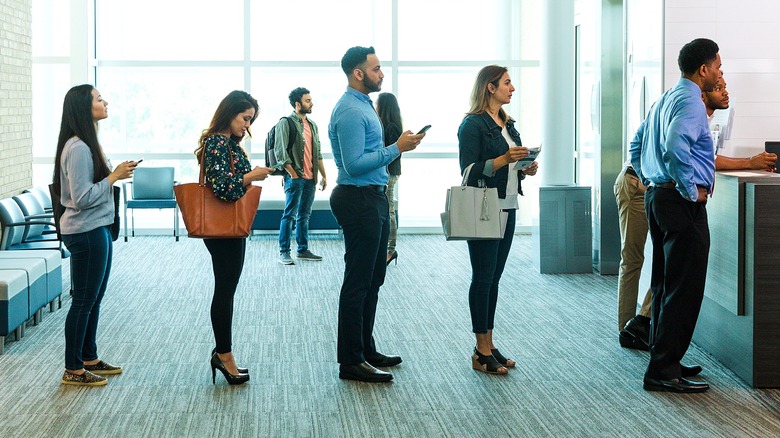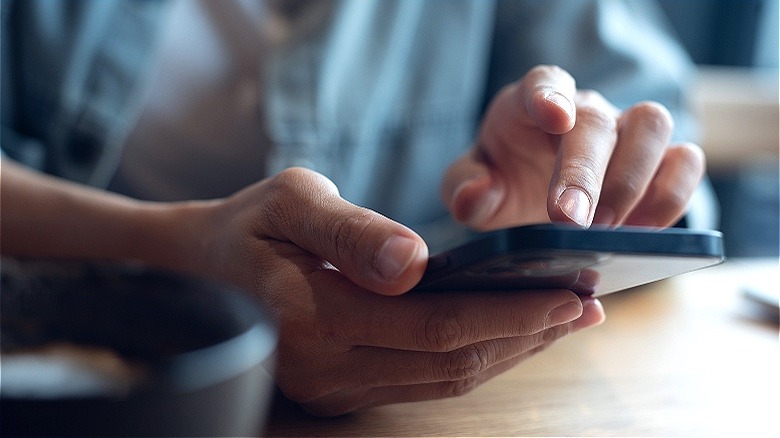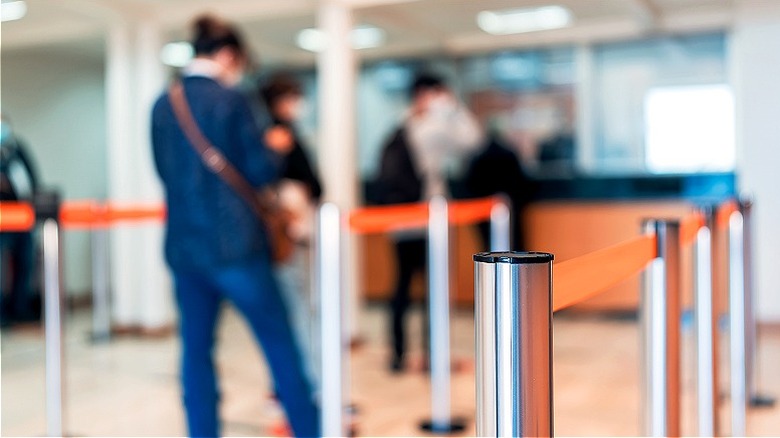Nearly 40% More Americans Prefer This Banking Method To Visiting A Branch
There was once a time when, if you needed to conduct banking business, your only option was to visit a brick-and-mortar bank branch. Whether you needed to cash a check (here's the one thing you should always keep in mind when doing so) or transfer funds from one of your accounts to another (this is how to avoid paying fees when transferring money), there was no way around waiting in a tedious line to complete the transaction.
However, with the advent of mobile banking, such transactions could be completed in seconds, and from anywhere through a smartphone or computer. Most big banks and credit unions offer customers a mobile option today, allowing them to do pretty much all banking activity, except withdraw cash, from the comfort of home.
This convenient form of banking was already on the rise prior to 2020, but it became especially handy during the COVID-19 pandemic and subsequent lockdowns. Rather than risk exposure to the virus, customers were urged to take advantage of mobile-banking options. Now, even with masking and social-distancing mandates long gone in the U.S., mobile banking remains the preferred method for a large portion of Americans.
Mobile banking is preferred by the majority of customers
While mobile banking used to serve as a supplement to physical branches, it's now the primary way to bank for the majority of Americans. According to Forbes Advisor's 2022 Digital Banking Survey, 78% of banking customers at the time preferred to complete transactions through their bank's mobile app or website (but does this allow banks to monitor your spending habits?). This is compared to the 29% who still prefer to visit a brick-and-mortar location.
A 2023 survey conducted by Morning Consult on behalf of the American Bankers Association, meanwhile, garnered similar findings. This study found that 71% (48% using cellphones, 23% using laptops) used digital banking over visiting a branch — with only 9% responding that this is their top banking option. "Mobile-banking use accelerated during the pandemic and has only grown in the years since as people continue to enjoy the convenience of banking on the go," explained Brooke Ybarra, ABA's senior vice president of innovation strategy.
The Morning Consult study also found that preferred banking methods vary by age group, with millennials (60%), Generation Z (57%) and Generation X (52%) more likely to use mobile banking than baby boomers (39%).
The rise of mobile banking is impacting branches
With more Americans than ever doing the bulk of their banking from the comfort of home or while on the go, business at physical branches has taken a hit. A 2022 analysis by the National Community Reinvestment Coalition found that over 4,000 bank locations have shuttered their doors since the beginning of the pandemic in March 2020. While this phenomenon is understandable, as it's not financially feasible to keep a space employed and running with minimal daily customers, the NCRC argues that it's also concerning given the fact that a portion of the population still relies on branches.
"There are certain things an app can't do," said Jason Richardson, senior director of research at the NCRC, noting, "In communities that have historically faced higher barriers to banking services and struggled to build wealth, the personal relationship between local business owners and bankers in local branches can be essential to securing credit or renegotiating loan terms."
Forbes pointed out, meanwhile, that, although branches are closing in the United States, they're far from extinct, as the annual rate of decline from 2012 to 2022 was only 1.7%. Customers, especially those who are less tech-savvy, aren't able to do everything through an app or a bank's website. Many also prefer the personal touch of a branch over calling a customer service number and waiting on hold.


